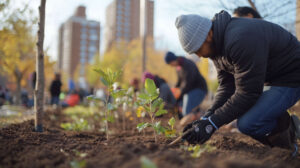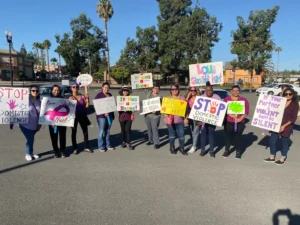العنف المنزلي مشكلة واسعة الانتشار بشكل مفجع، تؤثر على الناس من كل الفئات السكانية وفي كل بلد وعلى مر الزمن. ويمكن أن يسبب ألماً بدنياً وعاطفياً، ويؤثر على حياة الناس بأكملها، ويخلق مشاكل دائمة. الصدمة النفسية والمطالبة بقضايا مشتركة بين الأجيال.
للتصدي للعنف الأسري وعواقبه، من المهم تعزيز الوعي وإدامته. ولهذا السبب الشهر الوطني للتوعية بالعنف الأسري موجود! إليك المزيد عن شهر التوعية بالعنف المنزلي وما يعلمنا أن نبحث عنه في علاقاتنا وفي حياة من حولنا.
متى يكون شهر التوعية بالعنف الأسري؟
أكتوبر هو شهر التوعية بالعنف الأسري. منذ إنشائها في عام 1989, الشهر الوطني للتوعية بالعنف الأسري وقتًا لتعزيز الوعي بالعنف المنزلي، وأن تكون صوتًا لضحايا العنف المنزلي (DV)، ونشر المعرفة بما يبدو عليه العنف المنزلي وكيف يؤثر على الناس.
في أكتوبر 2022، سيكون موضوع الشهر الوطني للتوعية بالعنف المنزلي في شهر أكتوبر 2022 هو #Every1KnowsSome1. شعار هذا العام السمة "تسعى جاهدة لتسليط الضوء على مدى شيوع العنف الأسري وأنه أكثر من مجرد عنف جسدي." يمكنك دعم التوعية بالعنف المنزلي من خلال الدفاع عن ضحايا العنف العائلي، ومشاركة معلومات وموارد العنف العائلي على وسائل التواصل الاجتماعي، والتبرع للمنظمات التي تقدم خدمات العنف العائلي، وغير ذلك الكثير.
نظرًا لأن موضوع هذا العام يسلط الضوء على أن العنف العائلي يشمل أكثر من مجرد العنف الجسدي، فقد حان الوقت لتثقيف نفسك والآخرين حول ما يبدو عليه العنف العائلي. يمكن أن يشمل أنواعًا مختلفة ومتعددة من الإساءة مثل الإساءة الجنسية والعاطفية والمالية. تتمثل إحدى أفضل الطرق لفهم العنف العائلي العنيف في دراسة الاختلافات بين العلاقة الصحية والعلاقة المسيئة.
فيما يلي تفصيل العلاقات الصحية مقابل العلاقات المسيئةحتى تتمكن من التعرف على DV وفهمه بشكل أفضل.
ما هي العلاقة الصحية؟
العلاقات معقدة للغاية في جميع الحالات وتبدو مختلفة من شخص لآخر. ومع ذلك، هناك بعض الصفات الأساسية التي تميز العلاقة الآمنة والصحية. علامات العلاقة الصحية تشمل:
-
الثقة
-
الصراحة والصدق
-
الاحترام المتبادل
-
المودة
-
التواصل الجيد
-
الأخذ والعطاء (المعاملة بالمثل)
يمكنك أيضاً أن تسأل نفسك هذه الأسئلة لتقييم صحة علاقاتك
-
هل لديكم ثقة في بعضكم البعض؟
-
هل تحترمون بعضكم البعض؟
-
هل تدعمون اهتمامات وجهود بعضكم البعض؟
-
هل أنتما صريحان ومنفتحان مع بعضكما البعض؟
-
هل أنت قادر على الحفاظ على هويتك الفردية؟
-
هل تتحدث عن مشاعرك وآمالك ومخاوفك وأحلامك؟
-
هل تشعرين وتعبرين عن الولع والمودة؟
-
هل هناك مساواة وإنصاف في علاقتكما؟
تشير العلاقات التي تظهر الاحترام المتبادل والمعاملة بالمثل إلى المساواة بين الشريكين. هذه المساواة والسماح بالفردية هي شيء غالبًا ما يتم إزالته من العلاقات المسيئة، حيث يمارس المعتدي سلطته على شريكه ويسعى إلى التقليل من قدرات شريكه وموارده.
خصائص العلاقة المسيئة
وعلى الطرف الآخر من الطيف من العلاقات الصحية توجد العلاقات المسيئة. هذه الأنواع من العلاقات ليست مجرد علاقات غير صحية، ولكنها تتعمق في عالم العنف الأسري وتؤذي بشكل فعال. ومع ذلك، وكما ذكرنا أعلاه، لا يقتصر هذا الأذى على الأذى الجسدي فقط. يمكن أن يحدث الإيذاء لفظيًا، أو من خلال الإجراءات المالية أو المراقبة التكنولوجية، أو بأشكال أخرى عديدة.
في حين أن إساءة المعاملة يمكن أن تبدو مختلفة في كل حالة، إلا أن الشائع علامات العلاقة المسيئة تشمل:
-
الاتصالات المؤذية أو التهديدية
-
سوء المعاملة
-
اتهامات غير صحيحة بالغش
-
إنكار الأفعال المسيئة
-
التحكم في السلوك
-
السلوك الانعزالي
قد يحدث سوء المعاملة أيضًا في كثير من الأحيان في دورة من ثلاث خطوات تنطوي على تصاعد التوتر، أو فورة غضب كبيرة أو حدث عنيف، وفي بعض الحالات، فترة من الندم. يمكن أن تشجع فترة الندم هذه الأشخاص على البقاء في علاقات غير آمنة من خلال إعطائهم أملاً زائفاً بأن الظروف ستتحسن. إن القدرة على تحديد هذا النمط وفهمه يمكن أن يساعد الأشخاص في التعرف على العلاقات المسيئة التي قد يكونون هم أو أحبائهم فيها.
في Crisis House، نحن هنا خلال هذه الأوقات العصيبة لدعم العائلات من خلال خدماتنا ومواردنا. نحن نقدم التدخل في الأزمات, انتقالي و السكن الدائم, وخدمات للعائلات والأطفال الفارين من العنف المنزلي. نحن رواد في الخدمات الهامة في المقاطعة الشرقية في سان دييغو، وندير برامج للأفراد والأسر التي تعاني من العنف المنزلي و التشرد
انظر تأثيرنا و ساعدنا الوصول إلى المحتاجين عن طريق التبرع أو العمل التطوعي اليوم! يمكنك أيضاً اشترك في نشرتنا الإخبارية للبقاء على اطلاع بينما نعمل على ربط العائلات والأطفال والأفراد بالموارد الضرورية. معًا، يمكننا أن نوقف دورة العنف المنزلي وإساءة معاملة الأطفال والتشرد ونمكّن الناس من تجديد حياتهم!







